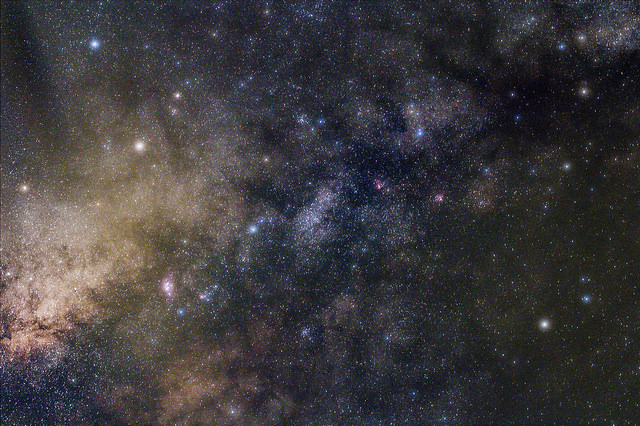The month of May begins under a Crescent Moon —which is getting ready to fully expose itself a week later— and with Mercury —stopped in the middle of the last dean of Aries— concluding its second retrograde motion of this year, and ready to start his march forward from its own day, Wednesday 3. These two astral processes dominate the stellar stage of the week.
The most significant event of these days will be the prolonged conjunction between Mercury and Uranus, which will show itself over a period of two weeks. It is an extraordinarily strange phenomenon, because Mercury’s proximity to the Sun and Uranus’ remoteness from it, forces these sidereal bodies to a movement at different speeds within the zodiacal sphere, due to the very much different sizes of their respective orbits.
Mercury is the planet closest to the center of the solar system and therefore the fastest one. It can go around the sidereal space completely in less than a terrestrial year, despite its usual three periods of retrograde motion during that lapse of time. On the other hand, Uranus requires about 84 years in order to make the same journey, which means that Uranus can hardly advance 5 degrees in one year, whereas Mercury travels the complete circumference (360°) in that same period.
It is rarely the case when Mercury and Uranus coincide in the same zodiacal point for more than two or three days. That rarity will be observed during these days. Last Friday the 28th, they coincided in the same position, when Mercury was in retrograde motion; and the coming Wednesday the 10th, on the same day of the awesome Full Moon, they will do so again, when Mercury happens to pass by again, but in a direct motion. The swift Mercury will be clinging to Uranus during these two weeks.
Mercury and Uranus share the same nature, for they handle themselves in the mental plane. Mercury (the Greek Hermes) was the astute, skilful, adaptable, quick-minded and easy-spoken god; the gods’ Messenger, the patron of merchants, the master of the crossroads and the Psychopomp, the one who drives the souls from the earth to the underworld, the one who helps to disincarnate at the hour of death. Uranus, on its part, was the god of heaven, stripped of any material structure. He had to join Gaia, the goddess of the Earth, to be able to father the Titans in her.
On March 13, 1781, the German-British astronomer William Herschel discovered what would be considered a new (the seventh) planet in the solar system, ending the notion that Saturn represented the limit of the Solar System. The newly discovered sidereal body was named after that mythological figure who ruled the heavens: OURANOS, father of the old Kronos, precisely Saturn itself, its castrating son.
The god Uranus surged from the Chaos that precedes all creation. For this reason, the planet of the same name is associated with the violent rupture of an order, which gives way to an environment of instability and uncertainty, and which sets the basis for a new structure of knowledge, processes and coexistence. This original character, exotic, extravagant, revolutionary, unpredictable, surprising and precursor of new times, puts it in tune with the zodiacal sign of Aquarius and with the social conditions of the time when it was discovered (industrial revolution, French revolution, The United States and other American countries’ independence).
This peculiar union of Mercury and Uranus in Aries integrates the qualities of each one into a single, more complex one. Both handle themselves in an extra-terrestrial, subtle and aerial medium; because Uranus is sort of an octave superior of Mercury. In this period, Mercury spreads the destabilizing character of Uranus, gives it more impetus and adapts it better to its unpredictable and chaotic condition; while Uranus gives a superior intensity to the mercurial exchange and communication processes, making them surprising, original, new and disconcerting.
The Mercury-Uranus protagonism of these times is comparable to the war drums in the Korean peninsula, the Russia-USA tensions, the attacks in Syria, the Turkish crisis, the corruption in Spain, the strikes and protests in Brazil, Argentina and Mexico, elections in France, global terrorism, natural disasters, and, of course, the difficult Venezuelan situation.
In the days to come it will be necessary to elucidate how the union of these two sidereal bodies will manifest itself. Either Mercury acts as a spokesman for the destabilizing and disconcerting intentions of Uranus; or the latter surprises us with an unexpected and original Mercurial attitude of dialogue and conciliation. In any case, the Furies, which generate an atmosphere of total chaos, should not be unleashed. Recall that they, daughters of Uranus, were three female mythological characters, responsible for punishing through hatred, persecution and revenge. They are the symbol of uncontrolled anger and irrational force, which are expressed when word and will do not mediate.
Translated by Jorge Pardo Febres-Cordero, Certified Public Translator (Spanish-English-Spanish) – [email protected]
Photo Credits: Stephen Rahn


